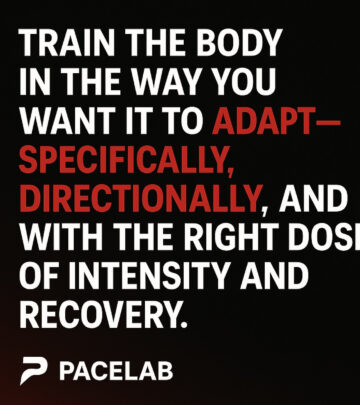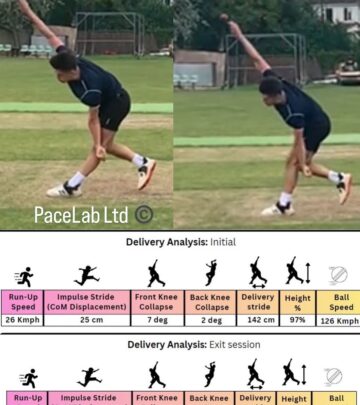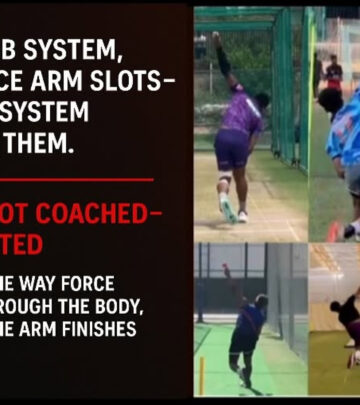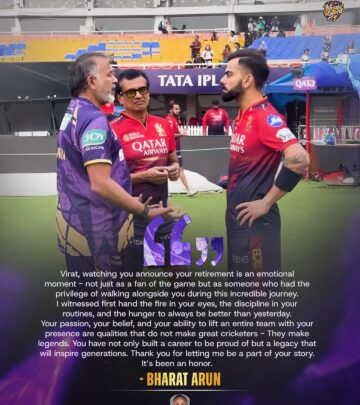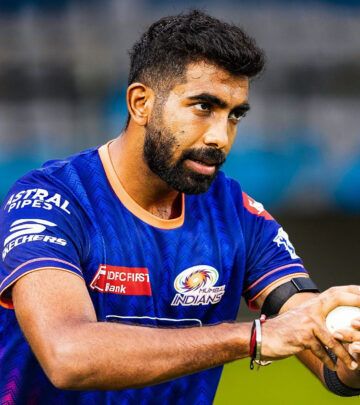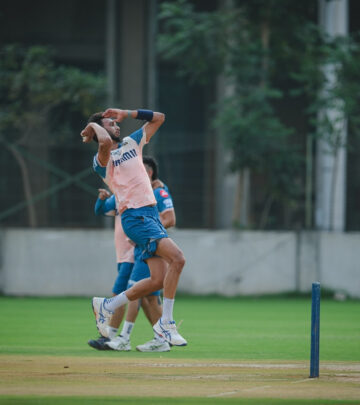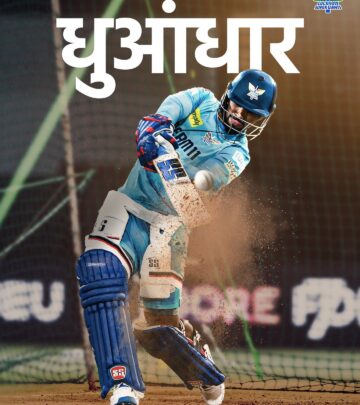Boost Bowling Speed With Ground Reaction Force
Achieving rapid delivery via biomechanical analysis and innovative training by Pacelab!
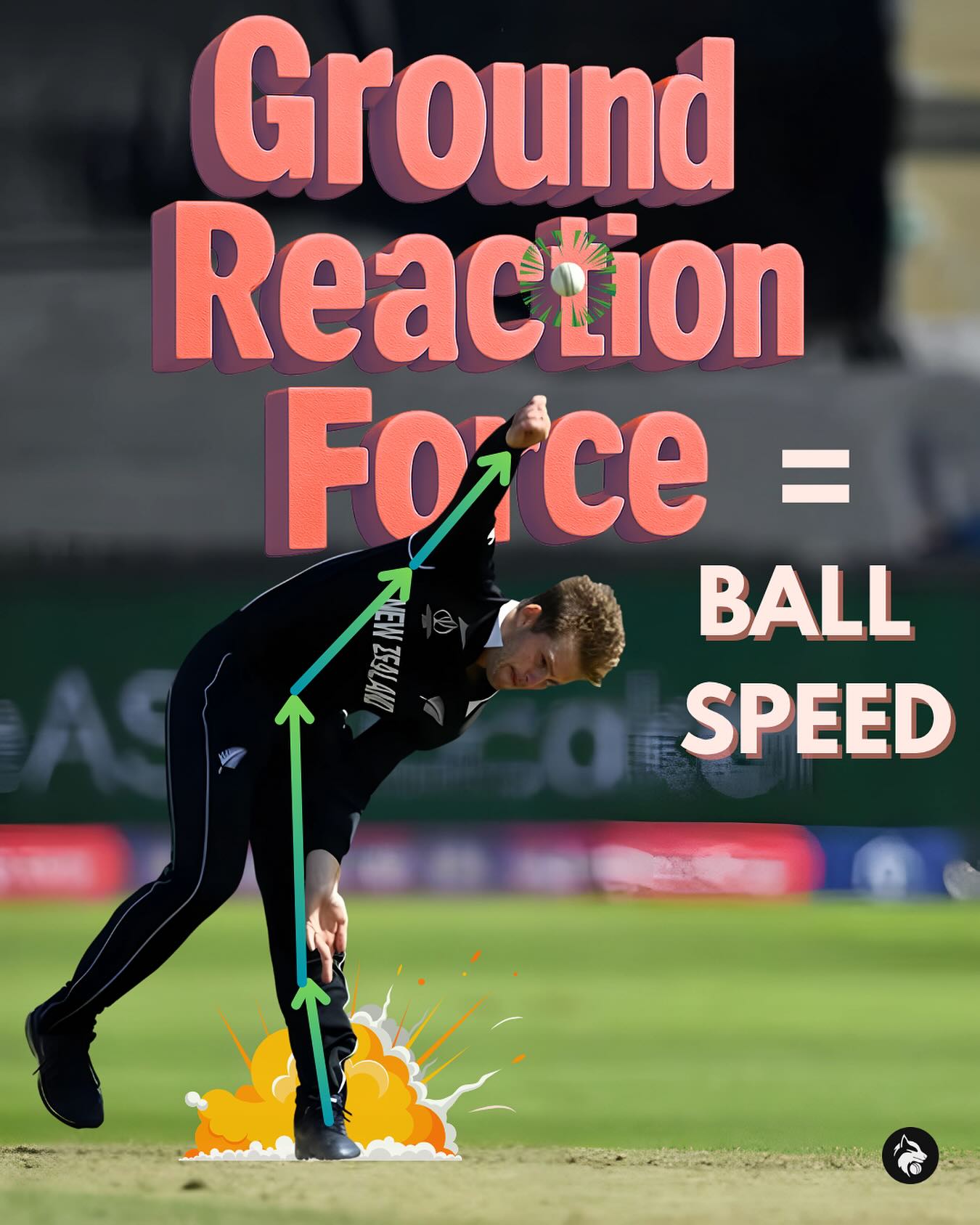
Image: Instagram
Steffan Jones (@steffanjones105) recently shared an eye‐opening Instagram post that emphasizes a simple yet powerful truth in fast bowling: “The more ground reaction force you generate, the faster you bowl!” The post, accompanied by striking graphics and hashtags such as #pitchwolf, #pacelab, #speed, and #analytics, underscores how modern sports training is evolving. Drawing on cutting‐edge biomechanics and data analytics, Pacelab is revolutionizing the way bowlers optimize their performance, introducing insights that blend traditional skill with technological precision.
Understanding Ground Reaction Force
In sports science, ground reaction force (GRF) refers to the force an athlete exerts against the ground during movement. In fast bowling, generating a higher GRF is critical—it translates into enhanced momentum transfer, allowing bowlers to deliver the ball with greater speed. Jones’s succinct message encapsulates this idea perfectly. Experts explain that GRF is not merely about raw power but also about how efficiently the body channels energy during the run-up and delivery. By focusing on biomechanical fundamentals, coaches are now teaching bowlers to harness every ounce of force from their legs and core, thus converting it into ball speed.
Cutting-edge Training Methods
Modern training techniques have moved beyond traditional methods and now incorporate precise data capture and analysis. Pacelab has been a trailblazer in this space. Several Instagram posts from Pacelab detail their approach to training sessions—especially those run at venues like Paul Roos Gym. Here, elite athletes participate in drills designed to optimize explosive power, enhance neuromuscular coordination, and learn the intricacies of impulse stride mechanics. One detailed post explains: “True speed is not just about throwing hard—it’s about how momentum is generated, controlled, and transmitted.” Such insights are transforming training programs that once focused solely on replicating a supposed ‘ideal’ bowling action.
The Pacelab system breaks down the bowling process into its key components. Athletes work on maximizing the force generated during their run-up, stabilizing their back foot contact, and efficiently transferring energy from the pelvis up through the trunk and into the arm. This holistic approach ensures that every movement is tuned for peak performance. Drills are tailored to adapt the athlete’s natural mechanics rather than forcing a rigid technique. This not only boosts speed but also minimizes injury risks by promoting sustainable movement patterns.
Innovative Biomechanical Analysis In Action
Steffan Jones’s commitment to leveraging scientific analysis is a testament to the growing role of technology in sports. By integrating high-speed cameras, force platforms, and advanced data analysis, trainers at Pacelab can assess a bowler’s performance in minute detail. The result is a training paradigm that pinpoints the exact moments where energy is lost or misdirected, allowing athletes to make targeted improvements. This data-driven approach is a significant departure from earlier methods, where coaches relied predominantly on visual assessments.
The benefits of this system extend beyond speed. Enhanced biomechanical insights help reduce the likelihood of overuse injuries—a common issue among fast bowlers. By understanding and controlling GRF, athletes can fine-tune their movements to not only accelerate the ball but also protect their bodies from undue strain. The conversation sparked by Jones’s post has ignited interest among players and coaches worldwide, many of whom are eager to adopt these advanced methods in their own training routines.
The Road Ahead For Fast Bowling
The integration of biomechanics and digital analytics is setting a new standard in fast bowling training. As illustrated by Pacelab’s recent camps and training sessions, the focus is now on building a robust kinetic chain that spans from the feet to the fingertips. This approach champions adaptability, ensuring that bowlers can adjust their mechanics in real-match scenarios and under fatigue without compromising their speed or risking injury.
The dialogue among sports scientists and practitioners is growing louder, with many advocating for a shift from outdated, one-size-fits-all techniques to more personalized training strategies. The principle is clear: by measuring and enhancing ground reaction force, bowlers can achieve faster deliveries and enjoy greater long-term durability. Steffan Jones’s post serves as both an educational tool and a call to action for athletes at every level to embrace a new era of performance enhancement.
In the dynamic world of fast bowling, where every millisecond counts, Pacelab and experts like Jones are championing the use of rigorous data analytics and biomechanical precision to redefine what it means to bowl fast. The synergy between traditional skill and innovative technology is not just transforming individual performance—it is also paving the way for safer and more effective training protocols that could shape the future of the sport.
As initial results from recent training camps continue to impress, there is little doubt that this scientific approach to sports training is here to stay. Athletes and coaches now have a clearer roadmap to not only boost performance through greater ground reaction force but also to reduce the injury risks that have long plagued fast bowlers. This convergence of technology and technique promises exciting times ahead, as more teams and players strive to bring science to the forefront of athletic excellence.
Read full bio of Joyce





